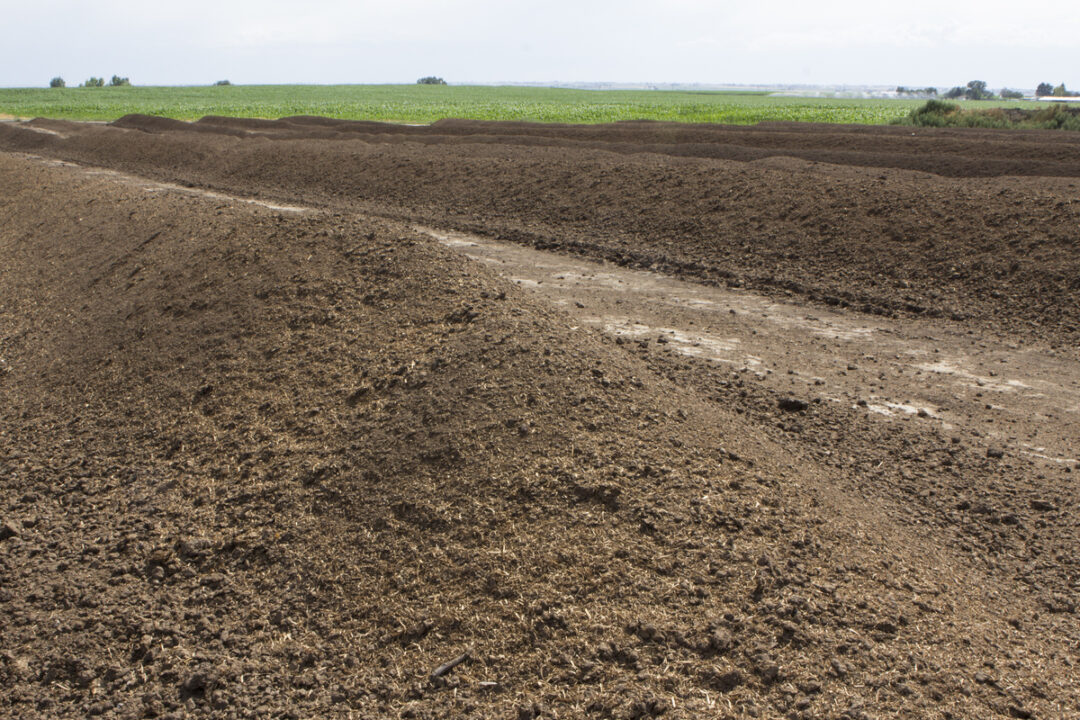Milk has been the traditional commodity of dairy farms for generations, but with the global demand to improve sustainability measures across industries, dairy producers should consider how there is opportunity on the farms beyond milk production.
“Carbon credits are not the silver bullet to solve all environmental challenges that exist today, but I think it’s a really promising potential for dairy,” said Jamie Vander Molen Boehl. “Stay curious about carbon credits because as we look at the developing markets in the environmental space, it’s an opportunity to diversify your revenue stream.”
Vander Molen Boehl presented, “Carbon credits: What do they mean and how do they affect dairy?” Oct. 5 during World Dairy Expo in Madison, Wisconsin. She is the vice president of sustainability initiatives and outreach with Newtrient.
As the carbon market continues to grow and opportunity arises for dairy producers across the country, Vander Molen Boehl spoke of three topics dairy producers need to consider before leaping into this venture. Not only does this market need to be fully understood to the best of a producer’s knowledge and why dairy can play such a crucial role in it, but also the risks and rewards of selling carbon credits as an additional commodity must be understood.
Carbon credits 101
There are two pathways to capture carbon credits on dairy farms and determine the value, either capturing carbon or avoiding carbon emissions.
Capturing carbon is most common and can be accomplished by improving soil health and sequestering the nutrient. On the other hand, dairy farms could use technologies to eliminate lagoon-related methane emissions. Both routes could generate carbon credits to sell to a potential buyer either within the dairy supply chain or in another industry.
If credits are sold within the dairy industry, they are considered insets and help build resiliency within the dairy supply chain. Credits sold externally are termed offsets and stay with that external company; the most common example in the market today is California’s transportation initiative, the Low Carbon Fuel Standard (LCFS).
Opportunities in the dairy industry
The market opportunities for the dairy industry continue growing year-over-year, and mostly due to consumer demand.
“Consumers are expecting brands to have sustainability commitments that will help them (the consumers) achieve sustainable lifestyles,” Vander Molen Boehl said. “They are the true drivers of the market expansion we see today.”
In a chart reflecting survey results from various studies, Vander Molen Boehl demonstrated how 70% of global consumers want to see companies’ sustainability practices, 81% of global consumers want companies to make decisions that positively impact the environment, and 88% of global consumers want companies to invest in sustainability in the next year.
To address consumers’ requests, companies across the globe have set out to reach hard-hitting sustainability goals and lower carbon emissions.
“Companies have set the goals and are now working through the plans to get to carbon neutral before 2030, 2040, 2050, whatever those goals may be,” Vander Molen Boehl said.
There are multiple ways in which the dairy industry can contribute to reaching these goals and gain access to carbon markets, with soil health practices, reducing enteric methane emissions and, most talked about right now, manure management practices to create renewable natural gas through anaerobic digestion.
“Any area that you can reduce carbon is also an area where you can capture carbon credits today or in the future,” Vander Molen Boehl said. “What's unique about dairy farming is that it's comprehensive – from enteric to manure to energy to feed – so there are many ways across the entire farm to participate in potential markets.”
One of the most successful markets for farmers to participate in is California’s LCFS, a program that is currently the largest carbon credit market with digester projects going online across the country to help reduce the Golden State’s transportation emissions.
To date, there are over 350 dairies across the country building or running manure digesters; 90% of those are developed solely for renewable natural gas, said Vander Molen Boehl.
“Although California has the most successful program up and running, we anticipate that other states might follow with a similar LCFS program,” Vander Molen Boehl said.
She added that government programs, such as the Inflation Reduction Act’s promotion of climate-smart agriculture, will further assist dairy producers in capturing the value of carbon credits. The first round of funding has included seven dairy projects totaling over $240 million.
Government funding offers tools and resources for producers to take the necessary steps in capturing these carbon markets.
“It’s positive to see support and excitement from the government,” Vander Molen Boehl said. “It’s focused on how they can help scale and support the adoption of climate-smart practices and advance the markets.”
The risks, rewards and questions to ask
To demonstrate the rewards of carbon reduction on farms, Vander Molen Boehl referred to a 3,500-cow dairy in Wisconsin. Including equipment, labor, utilities, services and management, the cost of traditional manure management on that farm was about $200 per cow per year. That cost could be reduced by implementing payments for carbon reduction practices, selling manure as fertilizer or selling carbon credits, for example.
“Although there are costs associated with adopting practices and technologies to reduce carbon and manage your manure, there are also some financial incentives,” Vander Molen Boehl said. “In the end, there’s an opportunity to break even or add revenue by stacking carbon credits with financial incentives and other available programs.”
But what are the concerns of producers?
In a survey from Trusted in Food, 97% of producers asked were not ready to participate in carbon markets. More than half of the participants (59%) were not joining without changes made to the market system, 31% were evaluating the market and waiting to see what happens, 7% had not heard of the carbon market opportunities, and 3% said they would not join a market.
The survey continued to show that producers want an annual payment amount per acre, credits for pre-existing practices, minimal paperwork and they want to hear from other farmers who are participating. The challenge is that a very small percentage of carbon market participants are livestock producers, said Vander Molen Boehl.
There is still plenty of inconsistency within the markets themselves, such as contract durations, acreage minimums, lookback periods, targeted buyers, and data control and privacy, to name a few.
“We need to talk about how incredibly complex these markets are to navigate because they’re new,” Vander Molen Boehl said. “The carbon markets are promising but not a silver bullet.”
To best navigate this space, Vander Molen Boehl urged producers to ask the following questions:
- What are the payment periods and annual payment amount?
- Am I getting paid for the practice and the technology or the actual outcomes?
- How are the outcomes verified?
- What is the minimum acreage required to enroll?
- What are the data requirements? Who owns the data?
Exploring the market for carbon credits takes time but is essential when deciding if these markets are the right fit for a farm’s business. And, with the multitude of markets today and on the horizon through renewable energy, feed additives and more, it is paramount the right decisions are made.
“These markets are only increasing, and the opportunities for dairy to provide reductions are increasing,” Vander Molen Boehl said. “Keep your options open and stay informed on what is coming down the pipeline in the future."










